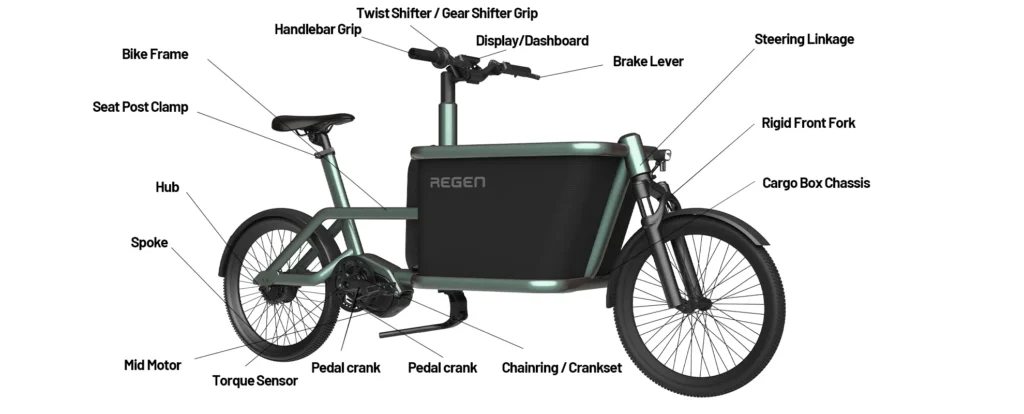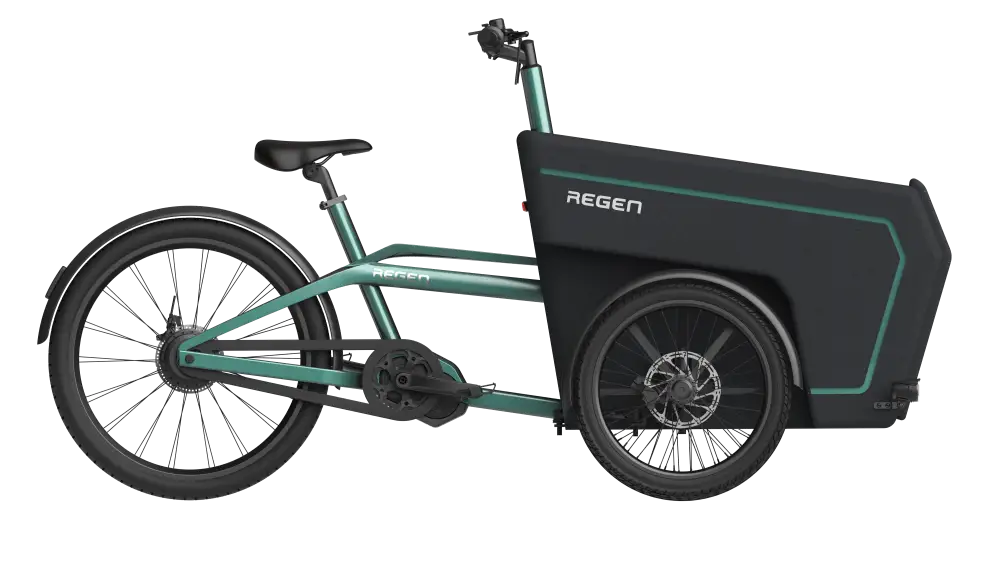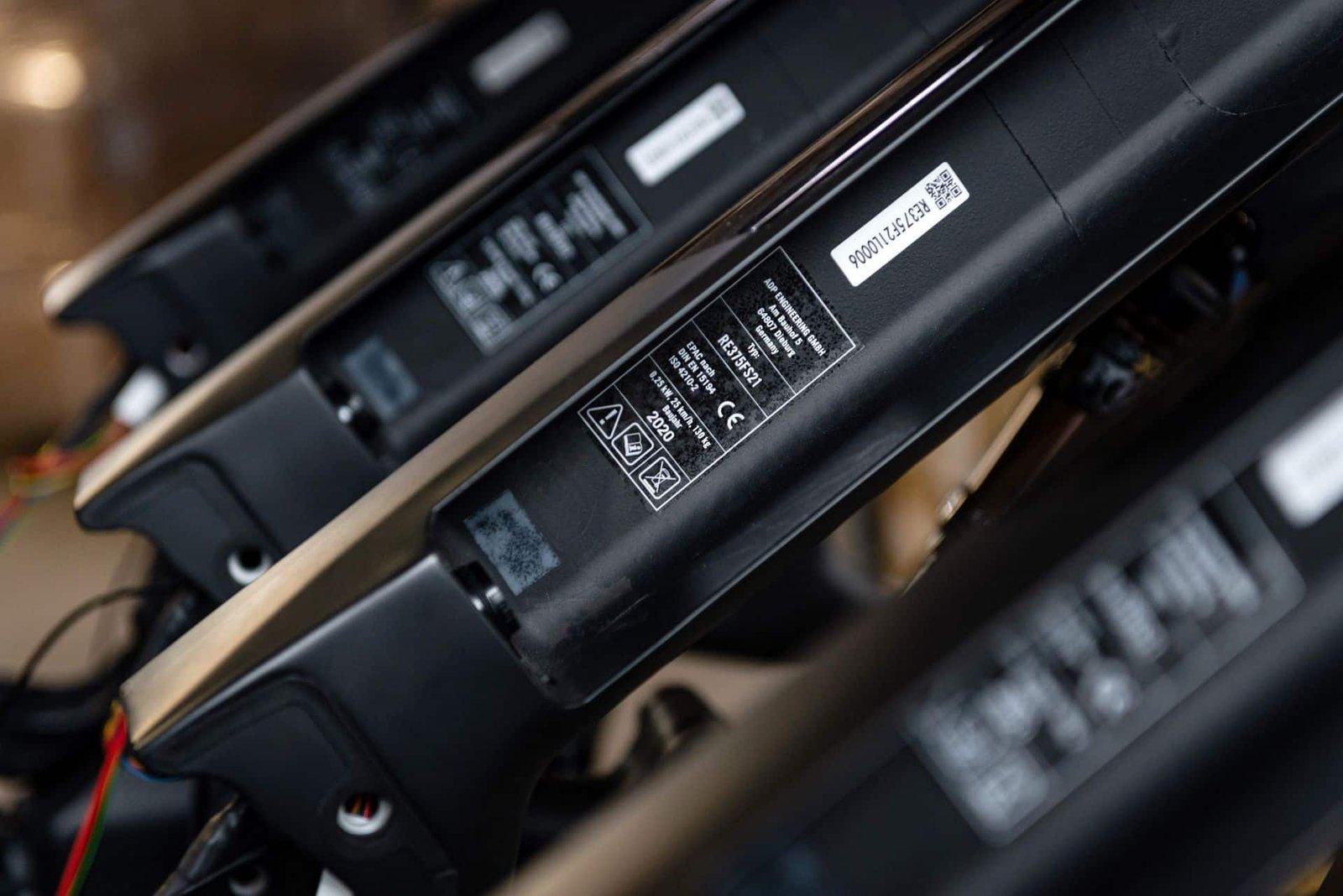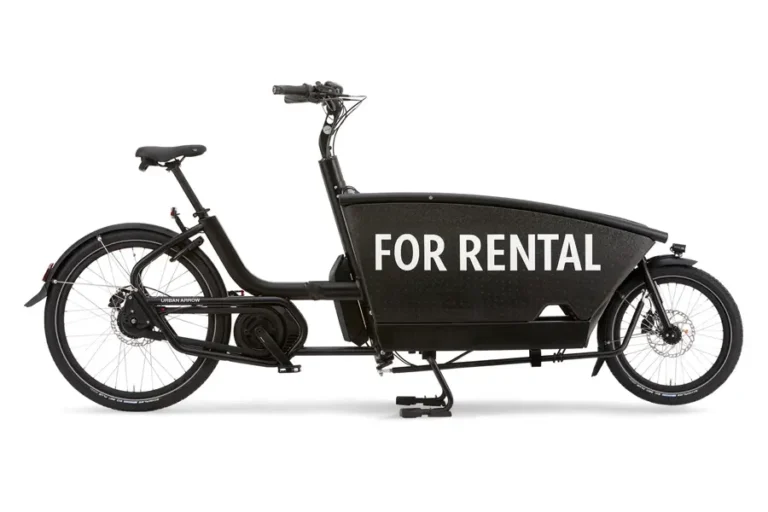Cargo bikes are transforming how we move goods and people in urban environments. But unlike a regular bike, cargo bikes—especially electric ones—consist of dozens of purpose-built components, each playing a critical role in functionality, safety, and usability.
Whether you’re a first-time buyer, an urban logistics planner, or a business owner looking into fleet procurement, this guide offers a complete walk-through of the key components of a cargo bike. We’ll explain what each part does, how it fits into the big picture, and what to consider when choosing or maintaining one.
💡 Want to reduce maintenance costs through smarter component choices? Check out our guide on modular part selection.

1. Structural Components (Designed In-House)
These components form the cargo bike’s physical structure and are often custom-engineered by manufacturers like Regen to ensure strength, safety, and compatibility with diverse use cases.
Frame
The foundation of any cargo bike. Our frames are typically made from 6061-T6 aerospace-grade aluminum or reinforced steel, offering high strength-to-weight ratio.
- Long John: Front cargo box between handlebars and front wheel
- Longtail: Extended rear rack
- Trike: Two front or two rear wheels for balance
📚 Learn more:
Why 6061-T6 Aluminum is the Best Material for Cargo Bike Frame?
1.2 Rigid Front Fork
The fork connects the front wheel to the frame. Rigid forks are strong, light, and require no maintenance—ideal for load-bearing bikes. Some cargo bikes use suspension forks to improve ride comfort.
1.3 Cargo Rack
Attached over the rear wheel or in the front section, the cargo rack supports panniers, delivery boxes, or seats.
1.4 Basket
Lighter and smaller than cargo boxes, baskets are perfect for personal items. Usually mounted at the front.
1.5 Cargo Box Chassis
This underframe reinforces the box and connects it to the main frame. Must be sturdy to absorb road vibrations.
1.6 Cargo Box
Your main cargo space. Materials range from marine-grade plywood to injection-molded plastic.
- Family Use: Often includes seats and safety belts
- Business Use: Can be branded, insulated, or refrigerated
1.7 Cargo Seat
Optional seating within the cargo box, especially for children. Should include harness points and weather-resistant materials.
1.8 Steering Linkage
A key system in Long John cargo bikes. The linkage connects the handlebars to the front wheel via rods or cables.
Not sure how it works? Our explainer on steering mechanisms breaks it down
1.9 Canopy Frame
This supports weatherproof covers for the cargo box—essential for comfort in rainy climates.
1.10 Handlebar Tube
Connects the handlebar to the front fork or steering linkage. Adjustable designs support ergonomic riding.
1.11 Rain Cover
Clear, flexible PVC or fabric canopy that keeps passengers and goods dry. Modular options improve flexibility and reduce replacement cost.


Only 20 MOQ Bikes to Get Started
Customizable E-Cargo Bike - RS01
Whether you’re a growing brand or a neighborhood store, our heavy-duty cargo bikes are your ticket into the booming world of eco-friendly delivery. Let’s roll!
2. Electrical Components (Power and Control)
Electric cargo bikes depend on a well-coordinated electronic system that helps move heavy loads with ease and efficiency. Below is a breakdown of the core electrical parts, their function, and how they support the bike’s overall performance:
| Part | Name | Definition & Role in Cargo Bike |
|---|---|---|
| 2.1 | Motor | Converts electrical energy into mechanical power to assist pedaling. Provides torque needed to move heavy loads. |
| 2.2 | Controller | The central processing unit of the motor system. Regulates power based on inputs from sensors and user settings. |
| 2.3 | Display / Dashboard | Mounted on the handlebar, shows real-time ride data like speed, power mode, battery status, and fault alerts. |
| 2.4 | Battery | Stores energy for the motor and accessories. Determines the range and power reserve of the cargo e-bike. |
| 2.5 | Sensors | Detect pedal input to regulate motor assistance. Torque sensors measure pedaling force; cadence sensors detect pedal rotation. |
| 2.6 | Front Light | Illuminates the road ahead for visibility and safety during night riding. |
| 2.7 | Tail Light | Increases visibility from behind. Often integrated with brake or turn signals. |
| 2.8 | Turn Signals | Optional safety feature to indicate direction change. Useful in dense traffic. |
| 2.9 | Wiring Harness | Electrical cable network connecting all components. Needs to be waterproof and well-routed. |
| 2.10 | Integrated Switch | Button or panel used to turn the bike on/off and control lights, power mode, or boost. |
| 2.11 | DC Converter | Converts high-voltage battery output to 5V/12V for USB ports, phone charging, or IoT systems. |
2.1 Motor
The motor is the engine of an electric cargo bike. It boosts the rider’s pedaling power and is essential for carrying heavy cargo or climbing hills. Two types are common:
- Mid-drive motor: Located near the crank, transfers power directly to the drivetrain. Provides better hill-climbing and load distribution.
- Hub motor: Built into the front or rear wheel. Quieter and simpler but less efficient under high loads.
2.2 Controller
This component acts like a brain, taking signals from the pedals, throttle, and sensors to manage how much power the motor delivers. It ensures smooth acceleration and efficient energy use.
2.3 Display / Dashboard
Your cockpit interface. It provides real-time data on speed, battery level, distance, assist mode, and diagnostics. Advanced displays may include GPS or Bluetooth.
2.4 Battery
Typically lithium-ion, batteries are mounted in the frame or on the rear rack. A high-capacity battery (e.g., 720Wh) can support over 60 km of assisted riding. Regen uses batteries certified to EU/CE standards from brands like LG and Panasonic.
2.5 Sensor
Two main types:
- Torque sensor: Measures force applied to pedals. Offers a natural, responsive feel.
- Cadence sensor: Measures if and how fast you’re pedaling. Simpler but less intuitive.
2.6–2.8 Lights
Front and rear lights are required in most regions. Advanced models feature automatic headlights, brake lights, and handlebar-mounted turn signals. These improve safety in high-traffic areas.
2.9 Wiring Harness
This is the nervous system of the electrical setup. A well-designed harness ensures stable connections, avoids shorts, and resists water and corrosion.
2.10 Integrated Switch
Many Regen cargo bikes use thumb switches integrated into the handlebar grip for quick toggling between power levels, lights, or horn.
2.11 DC Converter
Useful for delivery fleets or urban riders who rely on smartphones or IoT devices. Converts battery power to usable voltages for charging accessories or powering auxiliary devices.
3. Standard Bike Components (Interchangeable)
These parts are commonly used in regular bicycles but are often reinforced or adapted in cargo bikes to accommodate additional weight, stress, and functionality.
| Part | Name | Definition & Role in Cargo Bike |
| 3.1 | Fork | Holds the front wheel and connects it to the frame. Suspension forks add comfort; rigid forks are stronger for heavy loads. |
| 3.2 | Stem | Connects the handlebar to the fork and determines rider posture. |
| 3.3 | Handlebar | Enables steering and often houses control systems and grips. |
| 3.4 | Grip | Rubber or foam handles for comfort and anti-slip control. |
| 3.5 | Headset | Bearing system that enables smooth handlebar rotation. |
| 3.6 | Crank | The arm connecting the pedal to the bottom bracket. Transfers power. |
| 3.7 | Bottom Bracket | Houses the axle and bearings. Needs to be reinforced for cargo applications. |
| 3.8 | Pedal | Where the rider applies force. Larger pedals offer better stability. |
| 3.9 | Saddle | The seat. Wide, padded saddles are ideal for longer rides. |
| 3.10 | Seatpost | Connects the saddle to the frame. Height-adjustable. |
| 3.11 | Seat Clamp | Secures the seatpost in position. Quick-release clamps help shared riders. |
| 3.12 | Chainring / Crankset | Main front gear. Affects pedaling torque and speed. |
| 3.13 | Freewheel / Cassette | Rear gear cluster. Defines gear range. |
| 3.14 | Internal Gear Hub | Enclosed rear gear system. Low maintenance and weatherproof. |
| 3.15 | Hub | Wheel center that may contain gears, motor, or brake parts. |
| 3.16 | Brake Lever | Handlebar-mounted lever to activate brakes. |
| 3.17 | Brake Caliper | Applies pressure to brake disc for stopping power. |
| 3.18 | Brake Disc | Rotating disc that the caliper clamps onto. Found in disc brake systems. |
| 3.19 | Speed Sensor | Measures wheel speed to help regulate pedal assist. |
| 3.20 | Wheel | The rotating element. Cargo bikes use stronger rims and higher load tires. |
| 3.21 | Inner Tube | Inflatable tube inside the tire. |
| 3.22 | Tire | External rubber covering. Must support heavy loads and resist punctures. |
| 3.23 | Shock Absorber | Reduces vibration and improves comfort. Found in high-end models. |
| 3.24 | Air Spring | Suspension element using pressurized air. Lighter than coil springs. |
| 3.25 | Reflector | Enhances visibility. Required in many regions. |
| 3.26 | Mudguard | Blocks splashes from water and mud. Keeps rider and cargo clean. |
| 3.27 | Lock | Prevents theft. Frame locks are common on European cargo bikes. |
| 3.28 | Spoke | Connects hub to rim. Must be reinforced in cargo wheels. |
| 3.29 | Chain | Transfers power from crank to rear wheel. Must withstand tension and load. |
| 3.30 | Fasteners & Hardware | Includes nuts, bolts, clamps, and hinges essential for structural integrity. |
Recommended: Hydraulic vs. Mechanical Brakes – Which is Right for Cargo Bikes?
How These Parts Work Together
When well-integrated, these components create a safe, comfortable, and efficient cargo vehicle. An unbalanced system (e.g., weak brakes or underpowered motors) compromises performance.
Final Thoughts
Cargo bikes are not just oversized bicycles—they’re mobile systems designed for utility, efficiency, and safety. Whether you’re customizing your first family bike or managing a logistics fleet, understanding the components empowers better decisions.
👨🔧 Want to speak to our engineers about your build? Book a free consultation







